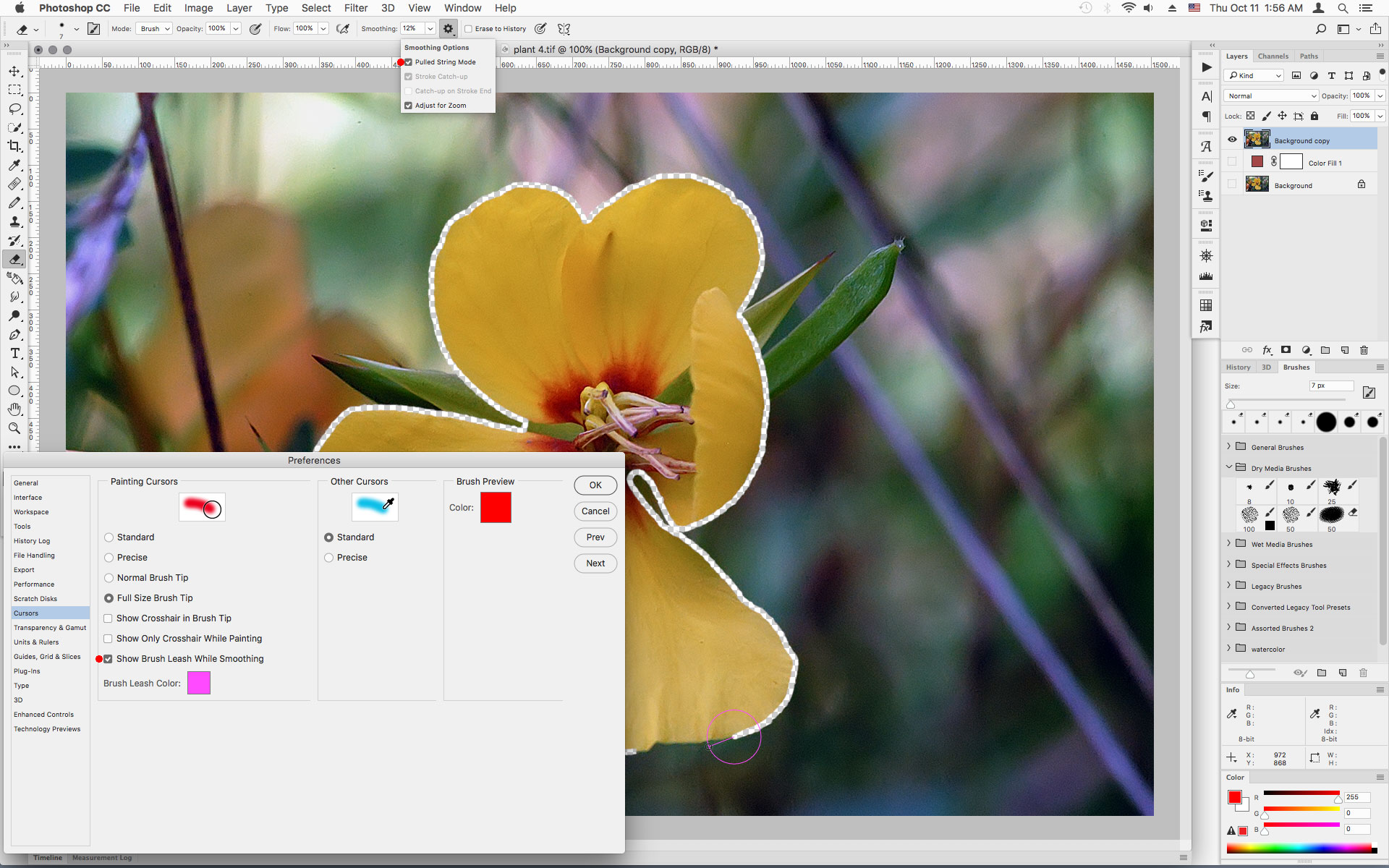
The steps to use the Pattern Stamp Tool are: You can select a preset pattern from the Photoshop library or create your own pattern. Photoshop comes with a variety of preset patterns. The Pattern Stamp Tool lets you fill an area with a selected pattern. 8.6a and b).Ī pattern is usually a design made up of an image that is repeated or tiled.
#Background eraser tool definition plus#
When you draw, a plus sign (+) appears on the original image while a corresponding circle appears on the cloned image (Fig. Step 4: Click and drag where you want the cloned image to appear. Click on the image to be cloned to set the sampling point. The cursor shape changes to a target symbol. These settings may include choosing a Brush Size Opacity value or setting the Aligned checkbox. Step 2: Click the appropriate settings in the Options bar (Fig. The steps to use the Clone Stamp Tool are: The cloned image can be drawn over another image or part of the same image. The Clone Stamp Tool lets you duplicate the parts of an image by setting a sampling point in the image to be cloned. Step 3: Click on the area you want to fix (Fig.
#Background eraser tool definition Patch#
(c) Proximity Match: Choosing this option makes the Spot Healing Brush Tool use the pixels around the edge of the selection to pick the patch for repairing the selected area. (b) Create Texture: Choosing this option uses all the pixels in the selection to create a texture that can be used to fix the area. You can use this option when removing large items such as scratches from your image. (a) Content-Aware: Choosing this option uses actual content from the image close to the flaw. One of the options includes choosing an appropriate Type option. Step 2: Select the appropriate options in the Options bar (Fig. Step 1: Select the Spot Healing Brush Tool. The steps to use the Spot Healing Brush Tool are: This tool can be used to quickly remove spots, blemishes and other marks from photographs. It automatically picks up the sampled pixels from around the area to be retouched. The Spot Healing Brush Tool works in a similar manner to the Healing Brush Tool except that it does not require the sampling point to be set. Step 4: Click and drag over the area to be repaired. Click on the area close to the area to be repaired to pick up the sampled pixels. If you deselect this option, the sampled pixels are always taken from the initial sampling point. If you select this option, you can release the mouse button without losing the current sampling point.

While working with this tool, you pick up sample pixels (pixels to be used for repairing) from the adjoining portion of an image. The Healing Brush Tool allows you to repair imperfections such as scratches, blemishes and marks in an image. Let us learn about some of these tools in detail. Some of the Retouching tools available in Photoshop are Healing Brush Tool, Spot Healing Brush Tool, Patch Tool, Red Eye Tool, Blur Tool, Sharpen Tool, Smudge Tool, Dodge Tool, Sponge Tool, Burn Tool, Clone Stamp Tool and Pattern Stamp Tool. The Retouching tools let you repair damaged images, apply repeated patterns or enhance the look of an image using various effects. Layers let us organise our work while Filters let us enhance the look of an image by adding various effects. We will also learn about two interesting and useful features of Photoshop-Layers and Filters. In this chapter, we will learn about the Retouching tools and the Type tools. In the previous chapter, we learnt about the Selection tools, the Drawing tools and the Painting tools.

CBSE Notes for Class 8 Computer in Action – Exploring More Features of Adobe Photoshop


 0 kommentar(er)
0 kommentar(er)
